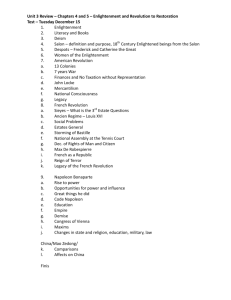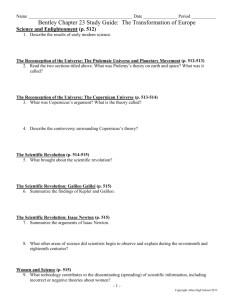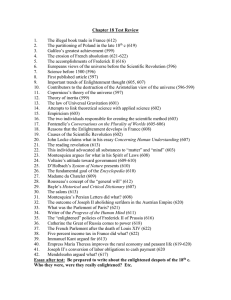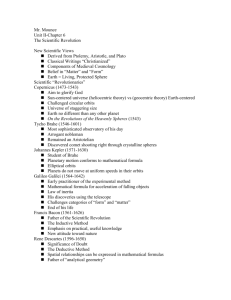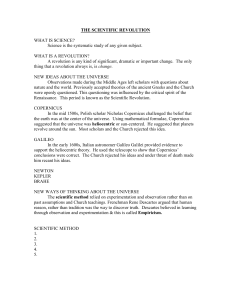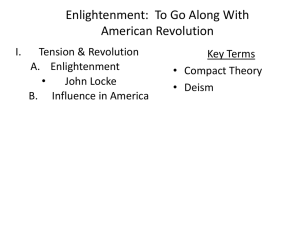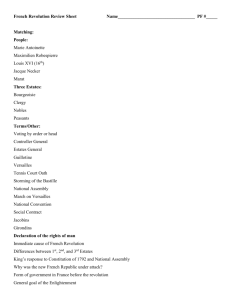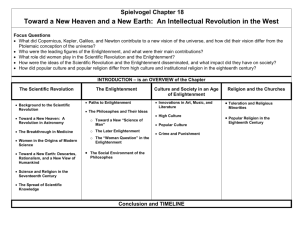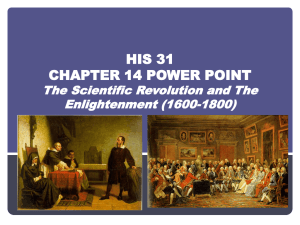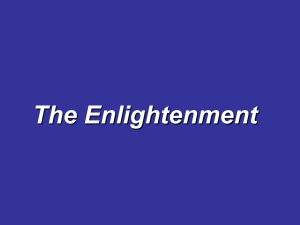Scientific Revolution and Enlightenment 1450-1750
advertisement
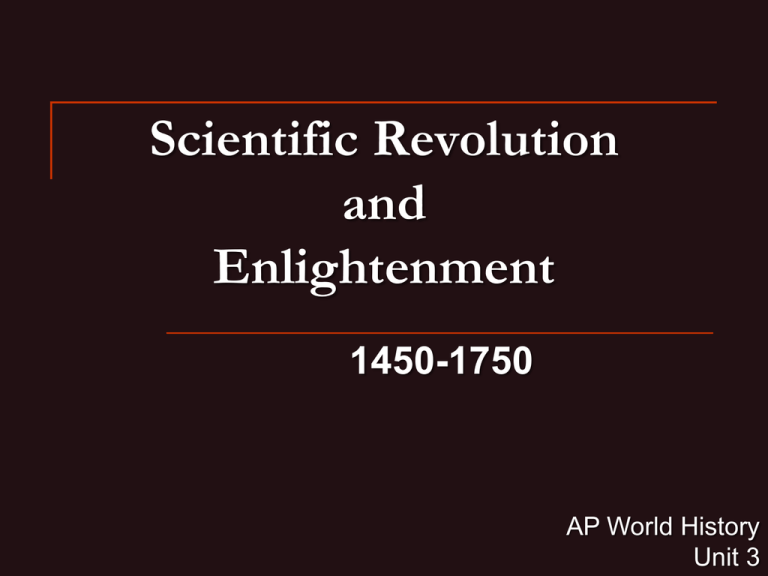
Scientific Revolution and Enlightenment 1450-1750 AP World History Unit 3 Scientific Revolution The re-conception of the universe. The Ptolemaic universe. A motionless earth surrounded by nine spheres. Could not account for the movements of the planets. Compatible with the Christian concept of Creation. The Copernican universe. The sun was the center of the universe, 1543. Implied that the earth was just another planet. Science becomes the new authority and challenges the faith for control. Johannes Kepler (1564-1642) Demonstrated planetary orbits. Scientific Revolution Galileo Galilei (1564-1642) Located sunspots, moons on Jupiter, and mountains on the moon. Theory of velocity, falling bodies anticipated modern law of inertia. Tried by the Inquisition because his ideas challenged the Papal infallibility. Scientific Revolution Isaac Newton (1642-1727) Mathematical Principles of Natural Philosophy in 1686. Mathematical explanations of laws govern movements of bodies. His work symbolized the scientific revolution. Direct observation Mathematical reasoning Enlightenment Thinkers sought natural laws that governed human society. Center was France. Theory of progress was a major ideology. Applied reason and science to society, government, and laws. Voltaire (1694-1778) Considered the father of the Enlightenment. Religious liberty and individual freedom. Enlightenment Adam Smith Montesquieu Laws of supply and demand determine price. Checks and balance in government. Deism Accepted the existence of a god. Denied the supernatural teachings of Christianity. “God the Clockmaker”. Ordered the universe according to rational and natural laws. Enlightenment Impact of the Enlightenment Weakened the influence of organized religion. Encouraged secular values based on reason rather than revelation. Subjected society to rational analysis. Promoted progress and prosperity. Applied science to every day life and made science practical.
